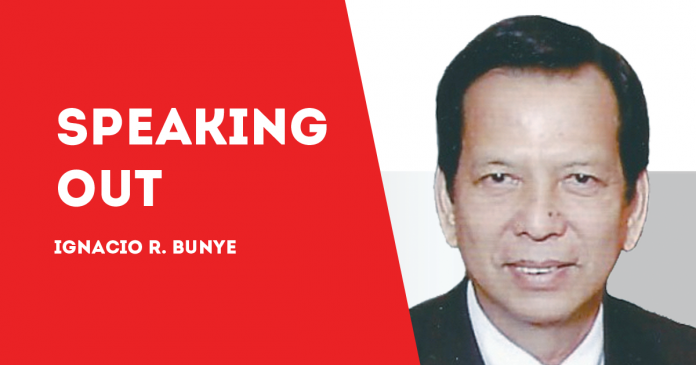
OVER the weekend, I have been receiving very positive feedback from readers who have perused the online version of my book “From Leyte to Bessang Pass”.
The book was supposed to have come out on or before Aug. 15, 2020, the 75th anniversary of the end of World War II in the Pacific. However, COVID-19 intervened and disrupted its printing. Concerned that the book might become passé by the time it rolled off the press, I decided to upload the manuscript online.
Former Chief Justice Art Panganiban, a very prolific writer, praised the “truthful, objective and easy-read historical account, free of victors’ braggadocio.”
Fellow BPI director Becky Fernando said: “Easy to read, very interesting unlike other historical books. I dread reading war stories but I am surprised I did not stop till I finished your book.”
Another BPI colleague Jay Luzuriaga said: “I shall share this with my two children, who are 32 and 28 years old respectively, to keep historical accounts of the Second World War in our country alive and abreast in the minds and hearts of our much younger generations.”
Former Press Secretary Tomas “Buddy” Gomez III, who was my first boss when I joined the Ayala group back then, described the book as a “must read”.
To others, the book evoked fond memories of their own fathers who served gallantly during the war.
Dr. Bert Fenix, a former roommate at Ateneo Bellarmine Hall in the ‘60s, told me about the gallant father he never met. Major Alberto Obra Fenix Sr. fought in Bataan with the 2nd Regular Division, Philippine Army, under Gen. Mateo Capinpin as G-2 (Intelligence) of that Division.
He received a field promotion to Major while in Bataan.
For his exploits in Bataan, Major Fenix was posthumously awarded the Bronze Cross. Years later, nine-year-old Bert Jr. proudly received the medal on his father’s behalf from then AFP Chief of Staff, Major General Calixto Duque.
Major Fenix survived Bataan and also the Death March, and was imprisoned in another internment camp for officers in Tarlac. After the Filipino prisoners of war were released in August 1942, Major Fenix went back to Manila where he had left his young bride, Ramona Veloso Pil, with a relative, the wife of Don Pablo Bustamante (of the Bustamante Press located on España Extension, a few houses from the Quezon City Welcome Rotunda.) The two hurriedly married just a couple of days before Major Fenix left for Bataan in 1941.
The Japanese tried to recruit the released Filipino officers to go back to their home provinces and command the local branches of the Japanese Bureau of Constabulary. But Major Fenix refused and instead accepted a position in the Philippine Veterans Affairs Office working there with General Segundo, Colonel Moran (father of the late Jesuit Eugene Moran), Captain Dennis Normandy, and others.”
The whole Veterans Affairs Office group was actually an intelligence gathering cell for the allied forces. Major Fenix would go out on intelligence missions at night and for days on weekends around Manila and in surrounding provinces, particularly in the Sierra Madre range.
As the Americans approached Leyte, Major Fenix was set to meet up with the Allied liberation forces. But in the early morning of Oct. 20, 1944, (the same day MacArthur landed in Leyte) the whole group in the Philippine Veterans Affairs Office were rounded up by the Japanese Kempetai and brought to their headquarters in Fort Santiago. They were never heard from again. Presumably, they were all tortured and executed by the Kempetai before the liberation of Manila.
Conrado “Sluggo” Rigor Jr. reached out to me through a common friend. His father, Colonel Conrado B. Rigor Sr. led three all-Filipino battalions of the 121st Infantry, USAFIP-NL. Reinforced by gritty bolo men from Abra, they assaulted Bessang Pass in the rugged mountains of North Luzon. Col. Rigor’s unit broke through a formidable enemy defense line entrenched within the mountainous terrain.
While on their way to Dolores, Abra with his kids years later, Col. Rigor pointed to the mountain ranges in the distance where he had fought side-by-side with Filipino warriors as they hunted well-entrenched Japanese forces. He said that many of those who were fighting against his troops were Korean boys, not more than 15 years old.
Frightened, hungry and sick, these young Koreans were really prisoners of war (POWs) who were forced by Yamashita to wear ill-fitting Japanese uniforms and fight against the Filipinos. Many of them ran from their battle trenches to surrender to Rigor’s men.
My younger brother, Yong who is based in Hawaii, emailed me about a US Army Major Galang who landed in the Philippines months before the liberation. Major Galang contacted my father, Alfredo M. Bunye, who was then superintendent in the New Bilibid Prison.
My father “hired” Major Galang as a prison guard and set the latter up in one of guard towers of NBP with his radio transmitter. Galang transmitted intelligence reports to MacArthur’s headquarters in Australia.
***
Note: You may wish to share the foregoing via Facebook, Twitter or Linked-In./PN





